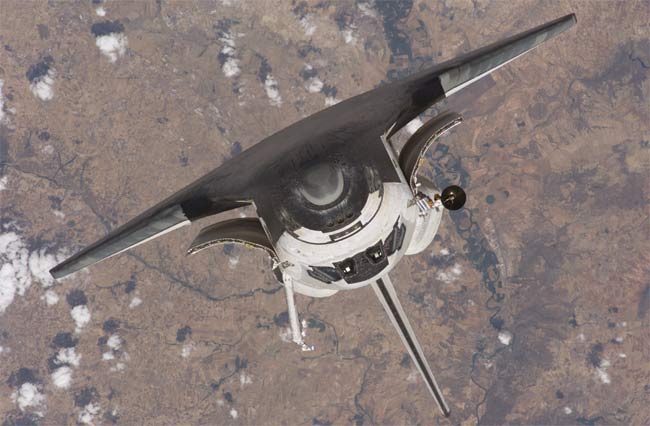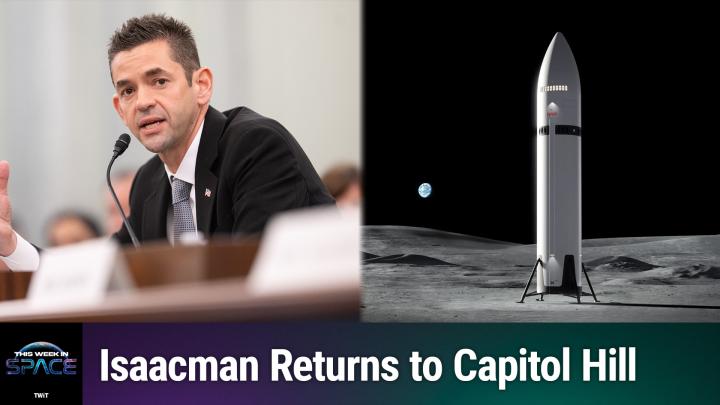NASA Clears Shuttle Discovery for Return Trip

HOUSTON - The heat shield that protects thespace shuttle Discovery from the searing temperatures of reentry has a cleanbill of health, NASA mission managers said Sunday.
Finalanalysis of a protruding bit of ceramic cloth and two dinged thermal blanketpatches yielded no concerns over Discovery's ability to bring its six-astronautcrew home safely, shuttle officials said.
"Not onlydid the team pound these issues flat, they put a dimple in the board when itwas all said and done," said Steve Poulos, NASA's orbiter project manager,during a briefing here at the Johnson Space Center. "We are absolutely clearand ready to bring this vehicle home whenever the mission is accomplished."
Theannouncement comes four days after Discovery's STS-121 crew made their firstinspection of their spacecraft's heat shield, and two days after a secondlook at six areasof interest chosen by a team of analysts.
"That isgreat news, that's fantastic," Discovery's commander StevenLindsey told flight controllers today after hearing the news. "To get allthat done by Flight Day 6 when we did focused inspections on Flight Day 4 isamazing."
Poulos saidthat detailed analysis of a small,ceramic cloth gap filler jutting from between tiles on the mid-aft regionof Discovery's belly have shown that - in a worst case scenario of maximumheating - the added stress it could cause during reentry would not exceed thethermal or structural limitations of the surrounding shuttle tiles orspacecraft structure. The heating would also not affect the eight shuttlesubsystems that are positioned inside the orbiter near that area of thevehicle, he added.
Similarly,engineers conducted pull tests on test articles, and then NASA's spaceshuttle Endeavour, to determine that a paid of small thermal blanketpatches on Discovery's nose should not rip off as the vehicle reenters theEarth's atmosphere. Additional debris transport analysis - using computermodels to determine whether any bits could damage Discovery if they did breakfree - also found no issues, NASA said.
Breaking space news, the latest updates on rocket launches, skywatching events and more!
Poulos saidSTS-121 mission managers have taken the lessons learned from the heat shield studiesof NASA's first post-Columbia mission, July 2005's STS-114 mission also aboardDiscovery, to streamline the process of evaluating the shuttle's thermalprotection system.
"What wefound was that a lot of the team members were spinning their wheels waiting onpeople to hand off data," Poulos said of the STS-114 effort, adding that newsystems are in place to cut down on that time. "Basically, all the data isavailable simultaneous to everybody."
Lindsey andhis STS-121 crew launched toward the International Space Station (ISS) on July 4,and are nearing the midpoint of their 13-daymission in orbit. Their shuttle mission is NASA's second orbiter test flightsince the 2003 Columbia accident,and is aimed at resupplying the ISS, ferrying a third crewmember to the orbitallab, and testing shuttle heat shield repair tools and techniques.
In additionto completing NASA's post-Columbia return to flight goals - which includes developingthe hardware and methods to fix damaged shuttle heat shield tiles and panels - Discovery'sSTS-121 mission is deliveringmore than 5,000 pounds (2,267 kilograms) of cargo, 2,000 pounds (907kilograms) of ISS equipment and European astronaut ThomasReiter to the orbital space station.
Reiter, anative of Germany and the first European Space Agency (ESA) astronaut to take along-duration post aboard the ISS, has joined the station's Expedition13 crew and will stay on through the beginning of Expedition14 before returning to Earth aboard Discovery in December.
"This hasreally been two missions for us," said John Shannon, NASA's deputy shuttlemission manager and chief of the STS-121 Mission Management Team. "The otherpiece of it, which is just as important, is what we have done for the station."
- Gallery: Shuttle's First Flight
- Gallery: Rare Space Shuttle Images
- Shuttle Discovery: Complete Mission Coverage
- Great Space Quizzes: Space Shuttle Countdown
- Great Space Quizzes: The Space Shuttle
- Great Space Quizzes: Life in Orbit

Tariq is the award-winning Editor-in-Chief of Space.com and joined the team in 2001. He covers human spaceflight, as well as skywatching and entertainment. He became Space.com's Editor-in-Chief in 2019. Before joining Space.com, Tariq was a staff reporter for The Los Angeles Times covering education and city beats in La Habra, Fullerton and Huntington Beach. He's a recipient of the 2022 Harry Kolcum Award for excellence in space reporting and the 2025 Space Pioneer Award from the National Space Society. He is an Eagle Scout and Space Camp alum with journalism degrees from the USC and NYU. You can find Tariq at Space.com and as the co-host to the This Week In Space podcast on the TWiT network. To see his latest project, you can follow Tariq on Twitter @tariqjmalik.
